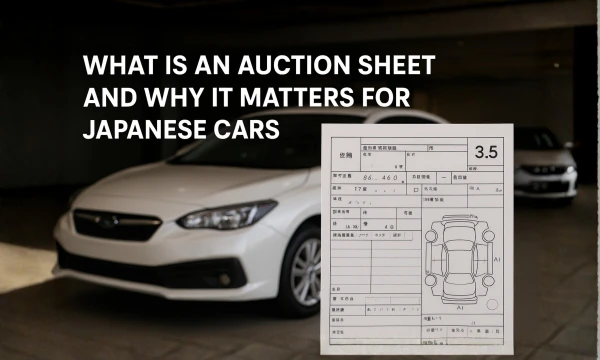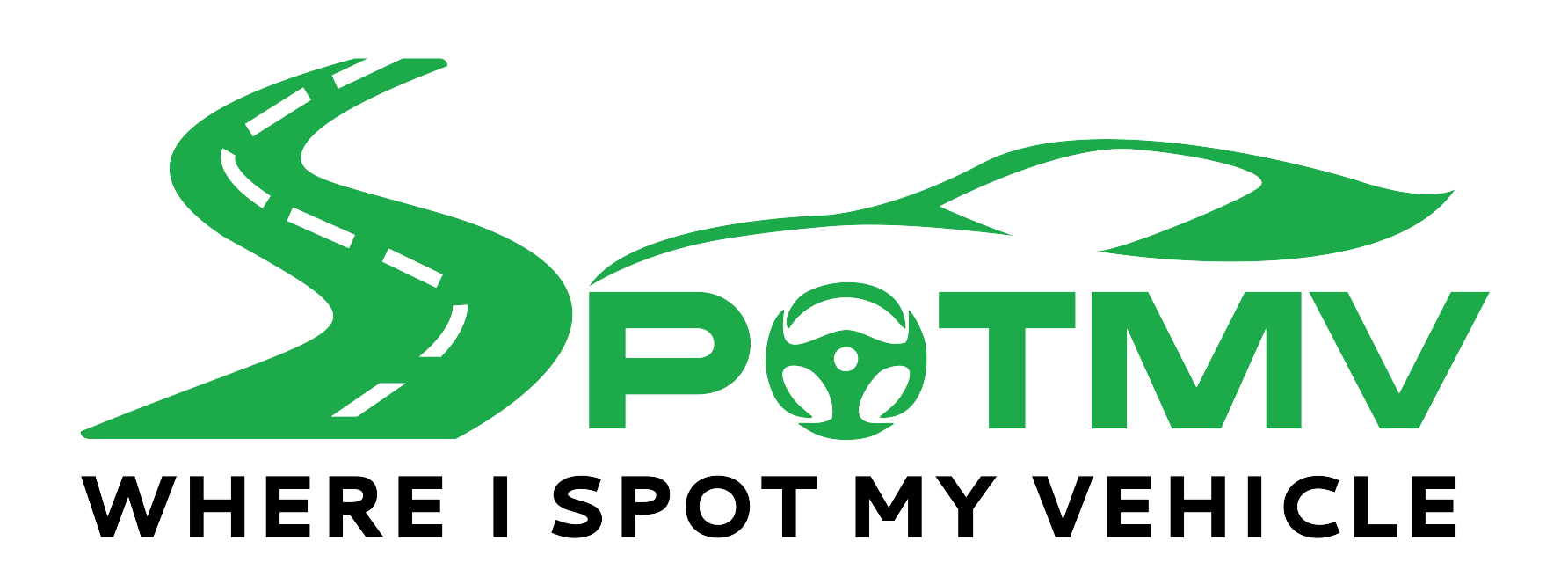
- Admin
- Oct 18, 2025
- Car Auction
What Is an Auction Sheet and Why It Matters for Japanese Cars
When you’re looking to purchase a Japanese-import car, whether it’s a sporty JDM model, a reliable day-by-day driver, or a budget import for Pakistan, one of the most imperative reports you’ll come across is the auction sheet. In basic terms, it’s the inspection report that was produced when the vehicle was sold at one of Japan’s used-car auctions. Understanding what it is, how to pursue it, and why it thinks it can make the difference between a great buy and a costly mistake.
This article will walk through what an auction sheet is, what it ordinarily contains, why it is a thing, especially for Japanese imports, how to decode it, and how to utilize it practically when buying a car.
What is an Auction Sheet?
An auction sheet (moreover known as an auction list or auction inspection sheet) is a document issued by a Japanese auto sell off house. It serves as an official record of the car's condition at the time it was put up for auction in Japan. This sheet is created by a professional inspector who evaluates the vehicle before it is listed.
Key features include:
- The vehicle's specifications and key details
- Mechanical condition
- Exterior and interior condition
- Accident or repair history
- Mileage
- Vehicle grade (based on overall condition)
- A diagram showing scratches, dents, and panel replacements
In other words, the auction sheet is like a report card for the car. It's one of the most vital sources of truth when it comes to understanding what you’re truly buying.
Why Auction Sheets Matter for Japanese Imports
Auction sheets are especially valuable when purchasing Japanese cars — particularly in countries where used Japanese imports dominate the market, such as Pakistan, New Zealand, Kenya, Bangladesh, and the UAE.
1. Provides Transparency
If you're buying a vehicle that’s coming from abroad, you clearly can’t review it in person. The auction sheet fills this crevice by giving you a detailed, fair summary of the car’s condition made by third-party experts, not the dealer.
2. Avoids Hidden Issues
Many used cars have hidden issues that are difficult to identify without a proficient inspection: accident repairs, frame harm, engine issues, or altered mileage. The auction sheet can reveal:
- If the car has been in an accident
- If panels or parts were replaced
- If there’s rust, dents, scratches, or other defects
- If the mileage has been verified
This helps avoid the risk of purchasing a “polished lemon.”
3. Helps Determine Fair Market Value
Cars with higher auction grades generally command higher prices. If you understand the reviewing system (more on that below), you can gauge whether the price being inquired matches the car’s genuine value.
For example, a car graded 4.5 with a clean inside is worth significantly more than a review 3 vehicle with many scratches and signs of wear.
4. Supports Compliance with Import Rules
In some countries, Japanese car imports must meet certain requirements. The sell off sheet helps affirm the car's age, condition, and history to comply with local purported regulations and resale guidelines.
5. Reduces the Risk of Fraud
Unfortunately, many buyers have been duped with fake documents or misrepresented vehicle conditions. The auction sheet, especially when verified, helps protect against scams like:
-
Mileage tampering
-
Accident history concealment
-
Falsified ownership records
What's Included in an Auction Sheet?
Auction sheets may look different depending on the auction house, but most follow a similar format. Here are the major sections:
Vehicle Information
-
Make, model, year
-
Chassis and frame number
-
Engine size and type
-
Transmission and drivetrain
-
Fuel type
-
Color and trim details
Mileage (Odometer Reading)
-
The exact mileage is recorded, along with any signs of tampering
-
If the mileage cannot be confirmed, it is clearly marked
Condition Grades
Cars are given two separate grades:
Overall Grade (0 to 6, R, RA, or A)
-
6 or S – Essentially new
-
5 – Excellent condition, very minimal wear
-
4.5 – Very good condition with light signs of use
-
4 – Good condition with some wear and tear
-
3.5 – Average condition, minor defects
-
3 – Below average, possibly with larger defects or repair history
-
2 – Poor condition, major defects
-
1 – Modified vehicle, or heavy damage
-
R or RA – Repaired vehicle (accident or structural damage)
Interior Grade (A to E)
-
A – Excellent
-
B – Good
-
C – Fair
-
D/E – Worn, stained, or damaged interior
Damage and Repair Markings
A diagram of the car (top-down and side views) shows damage using codes:
-
A = Scratch
-
U = Dent
-
S = Rust
-
W = Wave or paint blemish
-
X = Needs replacement
-
XX = Replaced panel
Numbers (1-4) may follow these letters to indicate severity.
Example:
- U1 = Small dent
- A3 = Large scratch
- XX = Panel has been replaced
Additional Notes and Inspector Comments
This section includes:
- Aftermarket parts or modifications
- Smoker or pet odors
- Mechanical issues
- Transmission or electrical problems
- Positive selling points (e.g., one-owner and service records)
Often, this section is handwritten in Japanese. That’s why having the sheet translated or reviewed by a professional service is highly recommended.
How to Use the Auction Sheet When Buying a Car
Here’s how to make the most of the auction sheet when shopping for a Japanese import:
1. Ask for the Auction Sheet Upfront
A reliable dealer should be able to give a unique or a verified copy of the auction sheet. If they hesitate or say its not available, consider it a red flag.
2. Match the Vehicle’s Details
Ensure the chassis number on the auction sheet matches the car. If there is any mismatch, don’t continue without futher verification.
3. Review the Grade and Condition
Check the grade. If the car is being advertised as "like new" but has a grade of 3.5 or “RA,” be cautious. Look at the interior and exterior grades too.
4. Analyze the Damage Diagram
Carefully check the outline for any X, XX, or large A/U/S marks. These can indicate major repairs, board replacements, or corrosion.
5. Get a Translation or Verification
If you don’t read Japanese, get the sheet translated or verified through a legitimate service. This guarantees you don’t miss basic information.
6. Compare Price to Grade
Don’t overpay. A grade 4.5 car is worth more than a grade 3 car. Make sure the price aligns with the sheet's information.
Common Red Flags to Watch For
- No auction sheet provided
- Inconsistent mileage between auction sheet and odometer
- High grade but excessive damage on the diagram
- Seller claims “no accidents” but auction sheet shows “RA” or “R” grade
- Replaced panels not mentioned by the seller
- Smoker or pet odors that are not disclosed in the listing
Conclusion
When buying a Japanese-import vehicle, the auction sheet is your best tool for understanding what you’re truly getting. It offers an honest look at the car’s past, from its physical condition to its potential repair history.
For many buyers in Pakistan and other countries importing Japanese vehicles, trusting the seller is not enough. By learning to read and verify the auction sheet, you protect yourself from scams, poor investments, and future regret.
Treat the auction sheet like a vehicle’s X-ray — without it, you’re buying blind. With it, you have the information you need to make a smart, informed purchase.


Comments